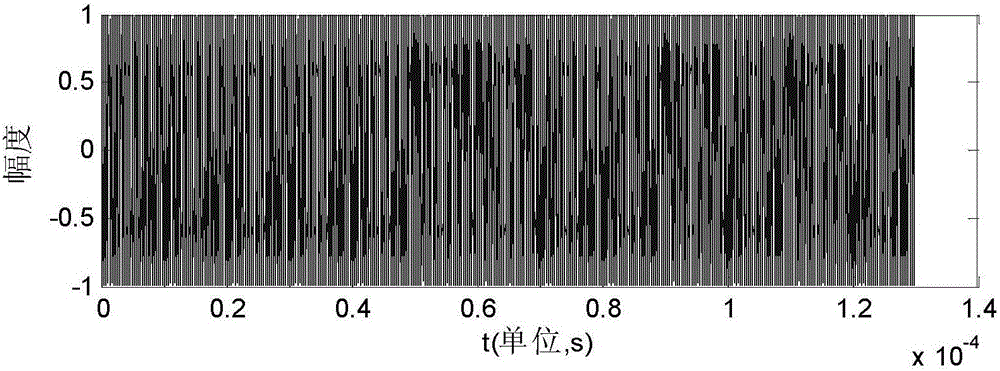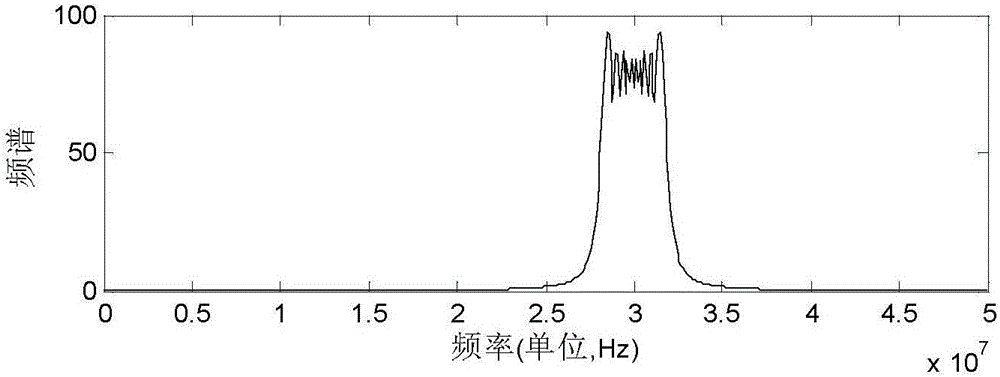Smart jamming noise signal design method based on velocity pull-off
A technology of interference noise and signal design, applied in radio wave measurement systems, instruments, etc., can solve problems such as inability to suppress interference, radar anti-jamming cancellation, and poor echo sidelobe anti-jamming measures. To achieve the effect of enhancing deception and suppression, improving practicability, and achieving stability
- Summary
- Abstract
- Description
- Claims
- Application Information
AI Technical Summary
Problems solved by technology
Method used
Image
Examples
specific Embodiment approach 1
[0069] Specific embodiment one: the smart interference noise signal design method based on speed dragging in this embodiment is specifically prepared according to the following steps:
[0070] Step 1. After the interference echo simulates the electromagnetic signal emitted by the radar to irradiate the target, it returns to the radar antenna through the secondary scattering of the target; at this time, the echo signal of the target is compared with the transmitted signal of the radar. There are obvious changes in three aspects; after the electromagnetic signal emitted by the radar is irradiated to the target, the time delay τ that returns to the radar antenna after the target's secondary scattering; the size of the time delay reflects the radial distance of the target relative to the radar;
[0071] Step 2. Calculate the Doppler frequency shift f of the radar antenna after the electromagnetic signal emitted by the radar is irradiated to the target and returns to the radar anten...
specific Embodiment approach 2
[0104] Specific embodiment 2: The difference between this embodiment and specific embodiment 1 is that the time delay τ described in step 1 is specifically:
[0105] τ=2R t / c (11)
[0106] In the formula, τ is the time delay of the target echo signal relative to the transmitted signal. Other steps and parameters are the same as those in Embodiment 1.
specific Embodiment approach 3
[0107] Specific embodiment three: the difference between this embodiment and specific embodiment one or two is: the Doppler frequency shift f returned to the radar antenna through the secondary scattering of the target described in step two d Specifically:
[0108] When there is a relative radial movement between the target and the radar, the frequency of the target echo signal will change, that is, the Doppler effect occurs; due to the influence of the Doppler effect, the frequency of the target echo signal has an Doppler shift f d The expression is:
[0109] f d = 2 v R t / λ - - - ( 12 )
[0110] In the formula, is the target range radar R t When is the radial velocity of the target relative to the radar. Other steps and parameters are the same ...
PUM
 Login to View More
Login to View More Abstract
Description
Claims
Application Information
 Login to View More
Login to View More - R&D
- Intellectual Property
- Life Sciences
- Materials
- Tech Scout
- Unparalleled Data Quality
- Higher Quality Content
- 60% Fewer Hallucinations
Browse by: Latest US Patents, China's latest patents, Technical Efficacy Thesaurus, Application Domain, Technology Topic, Popular Technical Reports.
© 2025 PatSnap. All rights reserved.Legal|Privacy policy|Modern Slavery Act Transparency Statement|Sitemap|About US| Contact US: help@patsnap.com



